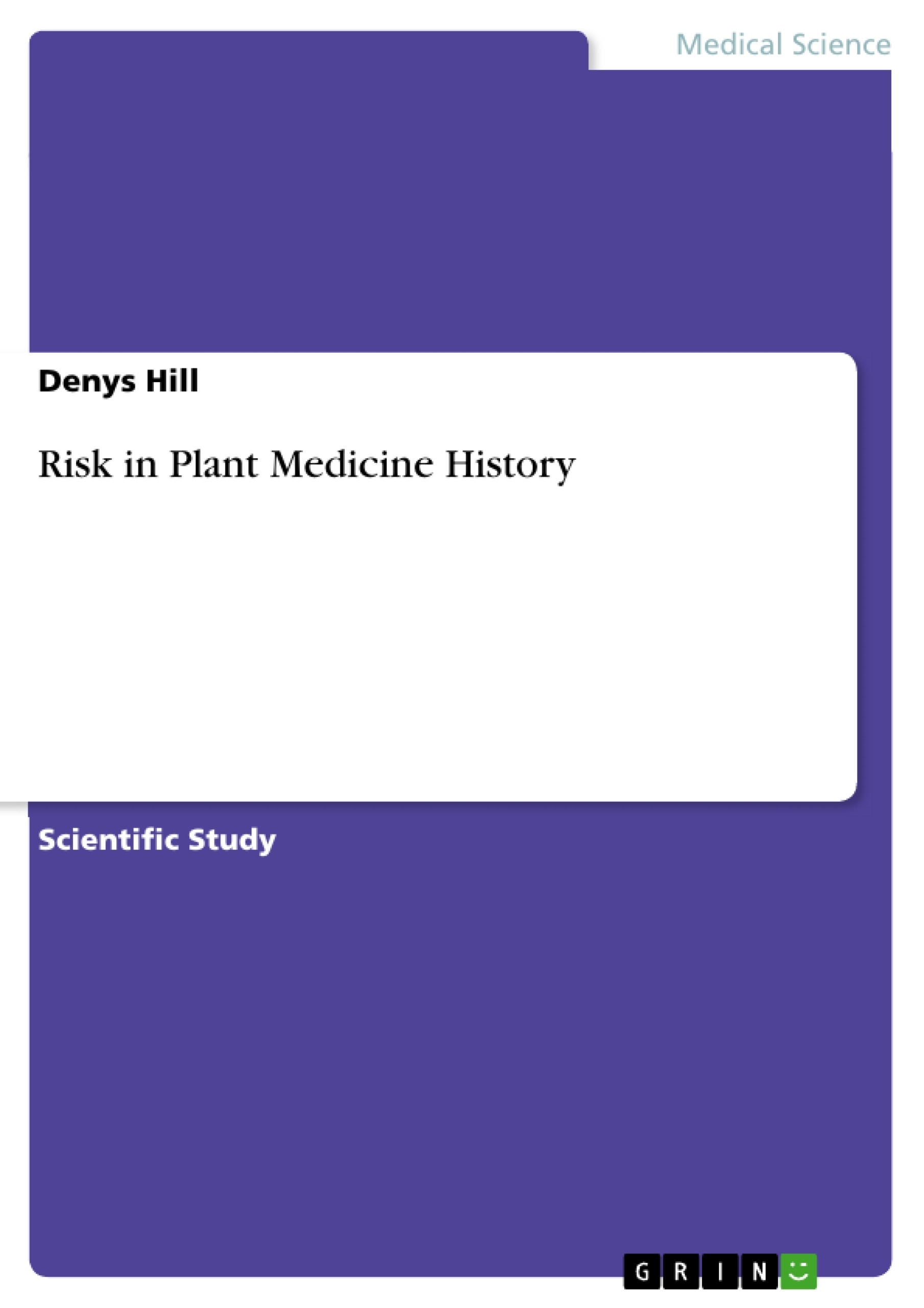Geographically widespread plant medicine, its persistent risks, and their impact on all sections of society, during historical time periods are appraised Risks associated with plant medicine were political, economic, logistic, financial, military, medical, religious and racial. Included in the appraisal of risks, are their causes, consequences, measurement and management.
Inhaltsverzeichnis (Table of Contents)
- Introduction
- Plant Medicine Risks
- Stakeholders at Risk
- Products at Risk
- Risk Indicators
- Causes of Risks
- Risk Measurement and Assessment
- Risk Characteristics
- Intrinsic Risk Resistance
- Managing Risks
- Conclusions
Zielsetzung und Themenschwerpunkte (Objectives and Key Themes)
This work explores the historical landscape of plant medicine, focusing on the various risks associated with its practice. It delves into the complexities of plant medicine as a network of interacting elements, examining the interplay of medical, logistical, financial, and social factors that influenced its development and use.
- The prevalence and interconnected nature of risks in plant medicine history.
- The diverse stakeholders involved in plant medicine and their varying exposures to risk.
- The impact of financial, social, and environmental factors on risk assessment and management in plant medicine.
- The role of uncertainty and variability in shaping the risks associated with plant medicine.
- The evolution of risk management techniques and their application in different historical contexts.
Zusammenfassung der Kapitel (Chapter Summaries)
- Introduction: This chapter establishes the historical context of plant medicine, highlighting its complexity and ubiquity. It introduces the concept of risk as a crucial element in the practice of plant medicine and explores the diverse factors that contributed to risk generation.
- Plant Medicine Risks: This chapter delves into the various types of risks associated with plant medicine, including medical, logistical, financial, fiscal, military, demographic, psychological, and environmental risks. It explores the different ways these risks manifested and the consequences they had for stakeholders.
- Stakeholders at Risk: This chapter examines the diverse stakeholders involved in plant medicine, including patients, providers, producers, traders, and authorities. It analyzes their varying exposures to risk and the unique challenges they faced.
- Products at Risk: This chapter focuses on the products used in plant medicine, including plants, herbs, and other natural substances. It explores the risks associated with their availability, quality, and efficacy.
- Risk Indicators: This chapter outlines the key indicators that signaled the presence of risk in plant medicine. These indicators help to identify and assess the potential for adverse outcomes.
- Causes of Risks: This chapter investigates the root causes of risks in plant medicine, including environmental factors, human behavior, and the dynamics of supply and demand.
- Risk Measurement and Assessment: This chapter explores the methods used to measure and assess risks in plant medicine. It discusses the challenges of quantifying risk and the importance of developing effective assessment tools.
- Risk Characteristics: This chapter examines the characteristics of risks, such as their magnitude, duration, and frequency. It explores the different ways risks can manifest and the factors that influence their impact.
- Intrinsic Risk Resistance: This chapter focuses on the inherent resilience of plant medicine systems to risk. It explores the factors that contributed to the persistence and adaptation of plant medicine practices in the face of various challenges.
- Managing Risks: This chapter delves into the various risk management techniques employed in plant medicine history. It examines the strategies used to mitigate, avoid, or transfer risk, highlighting the evolving nature of risk management approaches.
Schlüsselwörter (Keywords)
Key terms and concepts explored in this work include: plant medicine, herbal medicine, medical botany, phytomedicine, risk, uncertainty, hazard, stakeholder, patient, provider, product, availability, quality, efficacy, risk indicator, cause, measurement, assessment, characteristic, resilience, management, historical context, network, variable elements, crossover, demand, supply, financial factors, social factors, environmental factors, logistical factors, ancient civilizations, medieval Europe, early modern Europe, New World, eighteenth century England, nineteenth century Latin America, medical history, risk literature, natural sciences, behavioral sciences, applied sciences, management science, pro-active, reactive, changed circumstance boundaries, risk chains, unavoidable risks, elective risks, risk aversion, risk seeking, risk benefit analysis, historical analysis, appraisal.
- Citar trabajo
- Dr BA (Honours), MSc, PhD Denys Hill (Autor), 2019, Risk in Plant Medicine History, Múnich, GRIN Verlag, https://www.grin.com/document/492434



